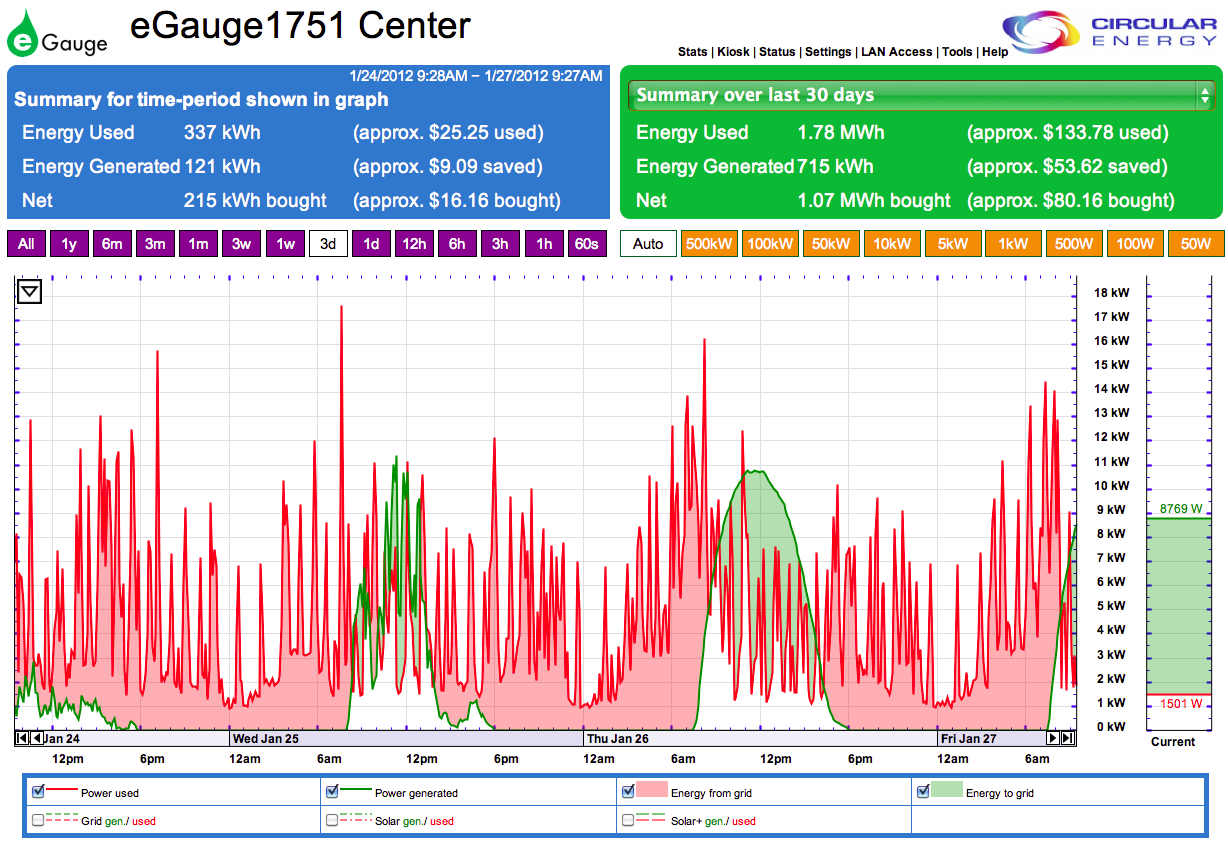
The system includes a monitoring capability which produces an informative real-time display shown here:
The graph displays most of three 24-hour periods beginning at 9:28AM CDT on January 24, 2012 and ending at about the same time on January 27. Light green areas indicate times when solar power exceeds household usage, and when the excess power is purchased by CPS. Pink indicates usage exceeding the power generated by the solar system, and when the deficit is made up by power purchased from the grid. The small panel on the far right gives a second-by-second indication of the current status of the system. At the moment this display was copied, household use was 1,501 watts while the system was generating 8,769 watts, leaving a surplus of 7,268 watts which was returned to the CPS grid.The blue and dark green upper panels show estimated measures of the
relative contributions of solar and grid power. The row of purple boxes
above the graph set the time period over which performance is graphed
(note that the 3d box is highlighted here). The row of orange
boxes controls the vertical scale of the graphs (set to auto scaling
here).
The continuous dark red line indicates our electrical power usage, which is highly variable over time. Most of the peaks occur when our heating system (heat pump) is running. Prominent peaks begin at around 6:00PM when passive solar heat gain in the house declines and the heating system comes on. Peaks are reduced at bedtime when thermostat settings are lowered, but recur at about 6:00AM when the heating system comes on again.
The system generates power during daylight hours (between about 7:30AM and 6:00PM at this time of year). These times are represented by areas below the dark green line on the graph. The extent and shape of each of these areas reveals local weather conditions during each of the three days shown: